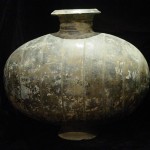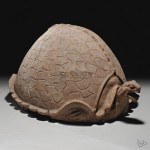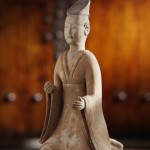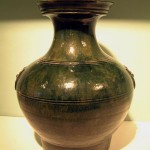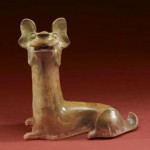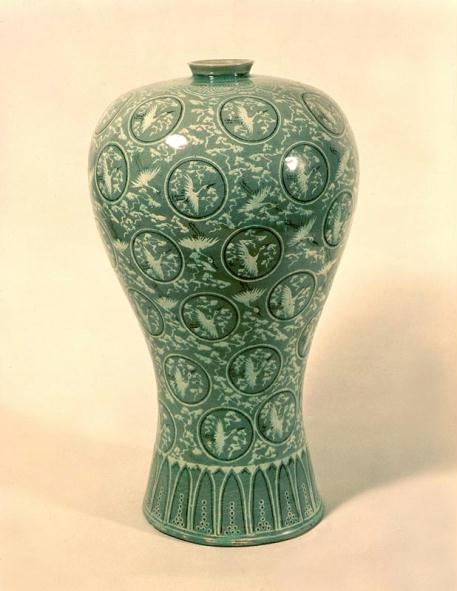The Han Dynasty was probably the key period for the development of Chinese ceramics. Not only did green and gray ware advance to a new level of sophistication, so did the development of low temperature lead glazes revolutionize the whole family of Chinese ceramics and decorative glazes for all time to come. As the economy continued to prosper so did the many uses for ceramics, both in the household and for ceremonial use as well.
During the Han Dynasty, pottery was used more and more for decorative purposes as well as their utilitarian purposes. As a result of this, not only did the shapes, sizes, and uses of the pottery change, so did their overall purpose and place in the home change as well. We continue to see a pioneering in the usages of both Green ware and Gray ware. With the introduction of such ornate animal shapes, candlestick holders, incense burners, dancers, maidens, court ladies, acrobats, musicians, constructed pottery dwellings, etc., we see the abundance of everyday life (during the Han Dynasty) represented by the art of the times.
As the Han Dynasty unfolded, the usage of figurines, maidens, soldiers, guardians, etc. all took of a life and beauty of their own. Pottery was always less expensive to manufacture than lacquers and bronzes so it became more and more economically feasible to promote this medium of art for so many reasons. Han pottery has been found in burial sites throughout all of China.
The development of Green ware during the Shang and Chou Periods moved at a very slow pace. For many reasons previously mentioned, the development of Green ware during the Han Dynasty moved at a much more accelerated rate. There was a large surplus of the porcelain clay available in these same regions of China. There were more kilns and more sophisticated technology to support the advancements as well.
The artisans were developing new styles of craftsmanship and, at the same time, new tools were being developed to raise the quality of execution by the craftsman. Pottery as an end product had never reached such levels of expertise as they did during the Han Dynasty. The Chinese, during the Han Dynasty, were now considered the first people in the world to manufacture true porcelain.
During the early period of Western Han, most of the figurines were of an aristocratic nature. The period during the later part of the Eastern Han was a time of abundance, happiness, celebration, and prosperity. The sculptures and castings of the time reflected the same quality of life. We also see during this time the introduction of animal figures and the Chinese zodiac figures such as pigs, chickens, dogs, horses, goats, etc. were in abundance as well.
To discuss Han pottery and not to discuss the donations made by the Han lead glaze ware would be a great injustice. The majority of pieces sold in the international Asian antique market are Han Dynasty lead glaze ware. Lead glaze wares were used as early as the Spring & Autumn Period.


